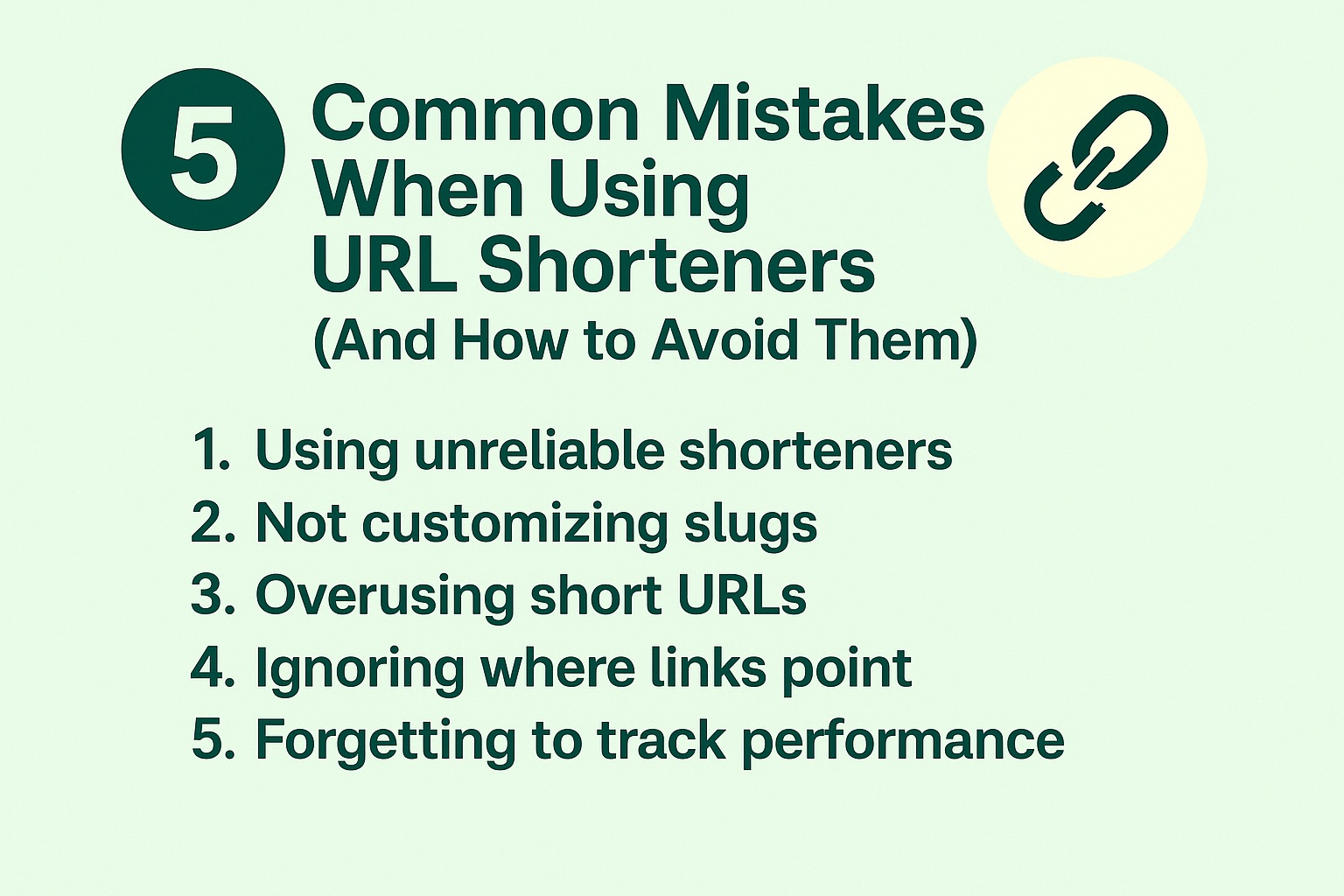5 Common Mistakes When Using URL Shorteners (And How to Avoid Them)
Are you making these 5 common URL shortener mistakes? Learn how to fix them and make your links work harder — with tips on trust, tracking, and best practices.

Shortening URLs can make your links look cleaner, easier to share, and trackable — but if used incorrectly, it can harm your brand, user experience, or even lead to lost traffic.
Here are five common mistakes marketers and businesses make when using URL shorteners, and how you can avoid them to keep your campaigns effective and secure.
❌ 1. Using Unreliable or Shady Shorteners
The mistake: Using free or unknown URL shorteners without checking their reliability. Some services shut down unexpectedly, inject ads, or even track user data unethically.
Why it’s bad: Broken links damage your credibility and hurt your SEO. Worse, it could expose your visitors to harmful content if the provider gets compromised.
What to do: Always choose a reputable shortener like Turtlink, which offers long-term support, uptime guarantees, and professional-level security.
❌ 2. Not Customizing the Slug
The mistake: Leaving your shortened URLs with auto-generated slugs like turtl.ink/X9b6z.
Why it’s bad: Random characters look suspicious, don’t build brand trust, and are hard to remember or speak aloud.
What to do: Customize the slug to reflect your brand or offer, like turtl.ink/summer-sale. This boosts click-through rates and brand recall.
❌ 3. Overusing URL Shorteners
The mistake: Using short URLs for everything — including internal links, direct emails, or where it’s unnecessary.
Why it’s bad: Too many redirects slow down page loads and can look spammy. Also, over-reliance on shorteners can make content harder to maintain.
What to do: Use them only when needed — for tracking, clean presentation, or when space is limited (like social bios or printed material).
❌ 4. Ignoring the Destination URL
The mistake: Sharing or reposting shortened links without verifying where they go.
Why it’s bad: You risk sharing misleading or even malicious content. Especially true when using third-party links or affiliate campaigns.
What to do: Always click and verify the destination before sharing — and if possible, use preview tools to double-check.
❌ 5. Forgetting to Track Performance
The mistake: Using URL shorteners without checking the data they provide.
Why it’s bad: You’re missing out on valuable insights — like who clicked, when, from where, and on what device.
What to do: Use platforms like Turtlink that offer full click analytics, even on entry-level plans. Track and optimize based on what’s actually working.
✅ Final Advice
Short URLs are a powerful marketing tool — but like any tool, they need to be used wisely. Avoiding these common mistakes will keep your links effective, professional, and secure.
Choose a service that lets you customize, track, and maintain your links properly — without hidden risks. For a reliable and affordable option, Turtlink is designed to help creators and businesses grow without compromising on quality.